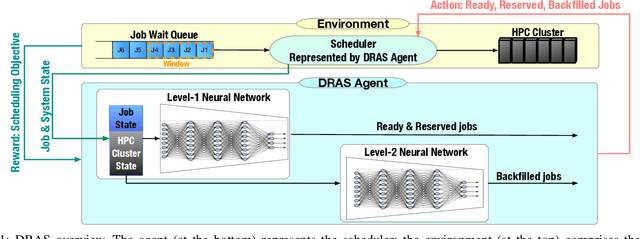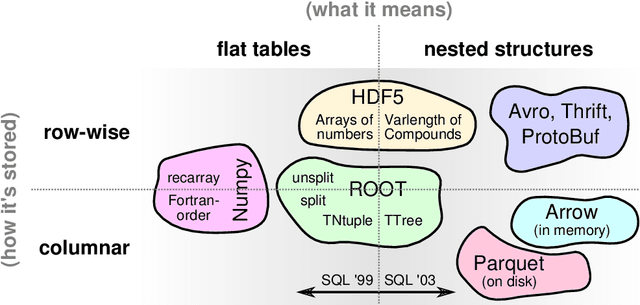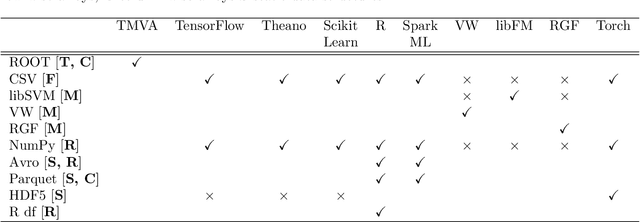Taylor Childers
Deep Reinforcement Agent for Scheduling in HPC
Feb 11, 2021



Abstract:Cluster scheduler is crucial in high-performance computing (HPC). It determines when and which user jobs should be allocated to available system resources. Existing cluster scheduling heuristics are developed by human experts based on their experience with specific HPC systems and workloads. However, the increasing complexity of computing systems and the highly dynamic nature of application workloads have placed tremendous burden on manually designed and tuned scheduling heuristics. More aggressive optimization and automation are needed for cluster scheduling in HPC. In this work, we present an automated HPC scheduling agent named DRAS (Deep Reinforcement Agent for Scheduling) by leveraging deep reinforcement learning. DRAS is built on a novel, hierarchical neural network incorporating special HPC scheduling features such as resource reservation and backfilling. A unique training strategy is presented to enable DRAS to rapidly learn the target environment. Once being provided a specific scheduling objective given by system manager, DRAS automatically learns to improve its policy through interaction with the scheduling environment and dynamically adjusts its policy as workload changes. The experiments with different production workloads demonstrate that DRAS outperforms the existing heuristic and optimization approaches by up to 45%.
* Accepted by IPDPS 2021
Machine Learning in High Energy Physics Community White Paper
Jul 08, 2018


Abstract:Machine learning is an important research area in particle physics, beginning with applications to high-level physics analysis in the 1990s and 2000s, followed by an explosion of applications in particle and event identification and reconstruction in the 2010s. In this document we discuss promising future research and development areas in machine learning in particle physics with a roadmap for their implementation, software and hardware resource requirements, collaborative initiatives with the data science community, academia and industry, and training the particle physics community in data science. The main objective of the document is to connect and motivate these areas of research and development with the physics drivers of the High-Luminosity Large Hadron Collider and future neutrino experiments and identify the resource needs for their implementation. Additionally we identify areas where collaboration with external communities will be of great benefit.
 Add to Chrome
Add to Chrome Add to Firefox
Add to Firefox Add to Edge
Add to Edge